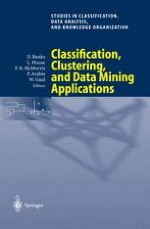2004 | Book
Classification, Clustering, and Data Mining Applications
Proceedings of the Meeting of the International Federation of Classification Societies (IFCS), Illinois Institute of Technology, Chicago, 15–18 July 2004
Editors: Dr. David Banks, Dr. Frederick R. McMorris, Dr. Phipps Arabie, Prof. Dr. Wolfgang Gaul
Publisher: Springer Berlin Heidelberg
Book Series : Studies in Classification, Data Analysis, and Knowledge Organization
Included in: Professional Book Archive
